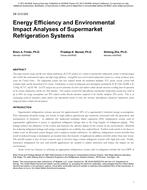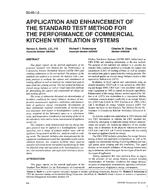Click here to purchase
The electrification of buildings presents an opportunity to reduce building emissions of greenhouse gases while providing a more efficient alternative to conventional heating systems. Heat pump systems are a growing technology in the United States and are continuously being evaluated for energy savings potential as well as overall cost compared to conventional systems. This paper explores the comparison of a conventional boiler heating system to a variable flow refrigerant system with respect to capital cost, operational cost, and CO2 emissions. A reference multifamily building in the northeastern United States is used to provide a case study comparison of the systems. The use of a carbon pricing initiative is evaluated in order to create an economic incentive for electrification of buildings. It was found that a carbon tax of $160/ton CO2 would be required to equalize the life cycle costs of the two systems. The scenario of a clean 100% renewable electrical grid was also considered. In this case a carbon tax of $125/ton CO2 was found for the breakeven point, a reduction of 22% for the required price on carbon.
Product Details
- Published:
- 2021
- Number of Pages:
- 9
- Units of Measure:
- Dual
- File Size:
- 1 file , 1.4 MB
- Product Code(s):
- D-VC-21A-C033
- Note:
- This product is unavailable in Russia, Belarus


